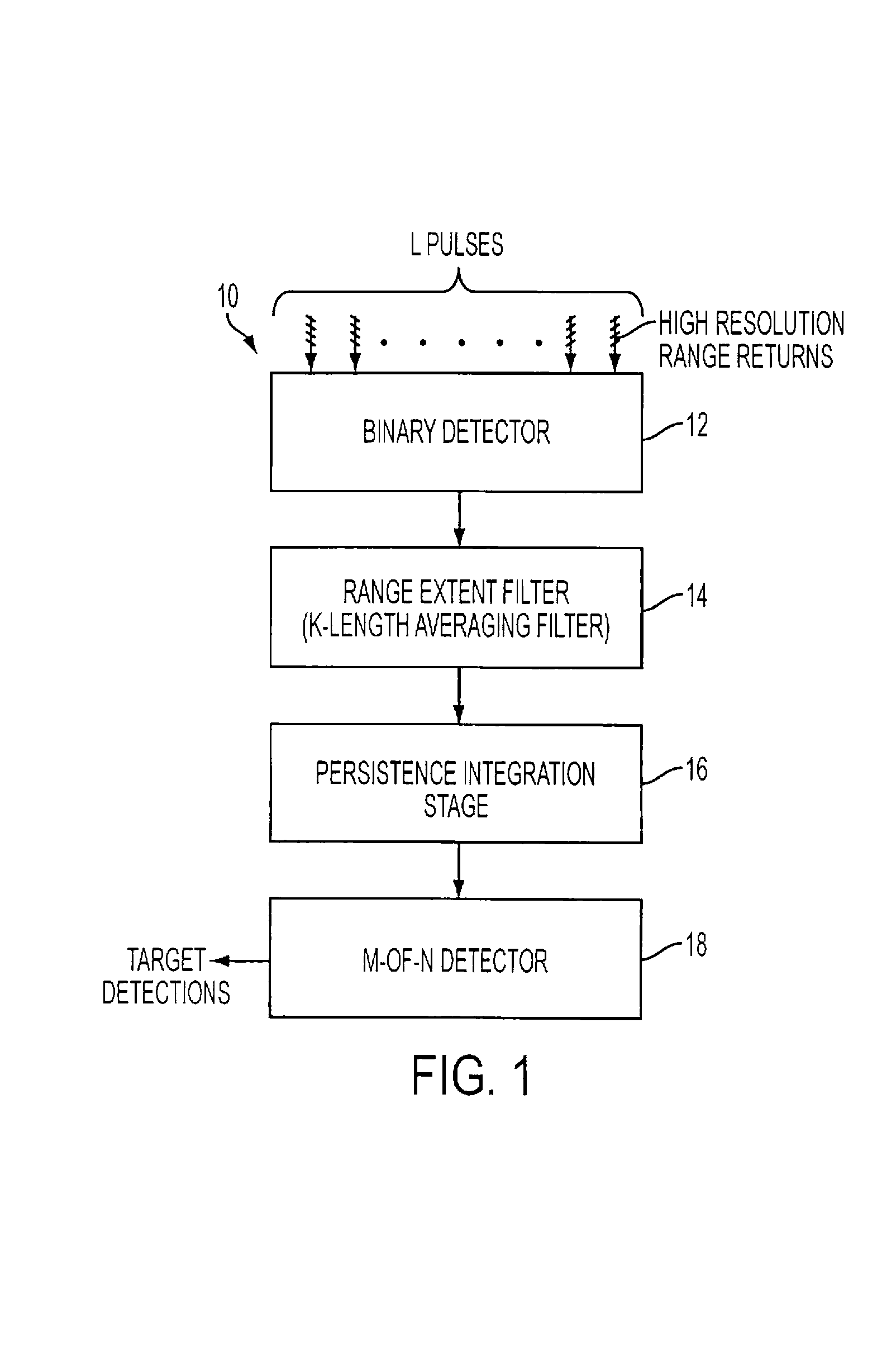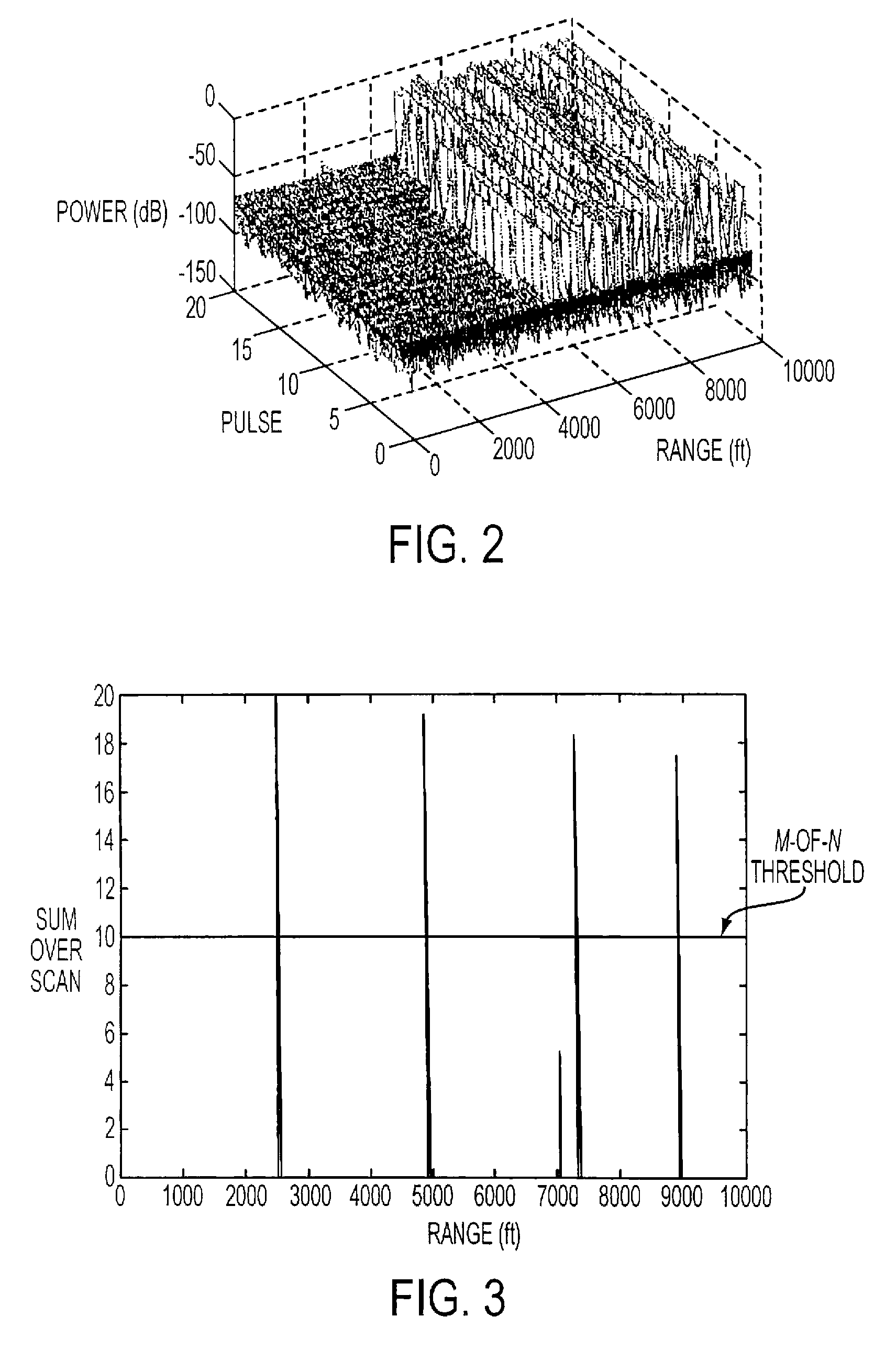Method and apparatus for detecting slow-moving targets in high-resolution sea clutter
a high-resolution, target technology, applied in the direction of measuring devices, instruments, using reradiation, etc., can solve the problems of difficult to distinguish actual targets from the surrounding sea clutter, difficult to distinguish from the background sea clutter, and conventional track-to-detect approaches do not work well either. , to achieve the effect of effective detection of slow moving targets
- Summary
- Abstract
- Description
- Claims
- Application Information
AI Technical Summary
Benefits of technology
Problems solved by technology
Method used
Image
Examples
Embodiment Construction
[0033]To provide additional background before describing preferred embodiments of the invention, it is noted that for high enough range resolution, even rather small targets tend to extend over a number of range cells. For larger targets, the number of range cells the target extends over can become quite significant. Therefore, target extent can be used to discriminate true targets against sea clutter when the range resolution is high enough. Further, coherent processing is not necessary because the integration gain is now defined as the number of range cells within a local region that exceed some predetermined threshold, thereby defining the detectable extent of the target.
[0034]While range extent alone can, in general, achieve fairly good detection performance in high sea states, the range extent approach may suffer from an increase in false alarms. To make the detection more robust, the persistence of the target returns is used in conjunction with the range extent. This is done o...
PUM
 Login to View More
Login to View More Abstract
Description
Claims
Application Information
 Login to View More
Login to View More - R&D
- Intellectual Property
- Life Sciences
- Materials
- Tech Scout
- Unparalleled Data Quality
- Higher Quality Content
- 60% Fewer Hallucinations
Browse by: Latest US Patents, China's latest patents, Technical Efficacy Thesaurus, Application Domain, Technology Topic, Popular Technical Reports.
© 2025 PatSnap. All rights reserved.Legal|Privacy policy|Modern Slavery Act Transparency Statement|Sitemap|About US| Contact US: help@patsnap.com



